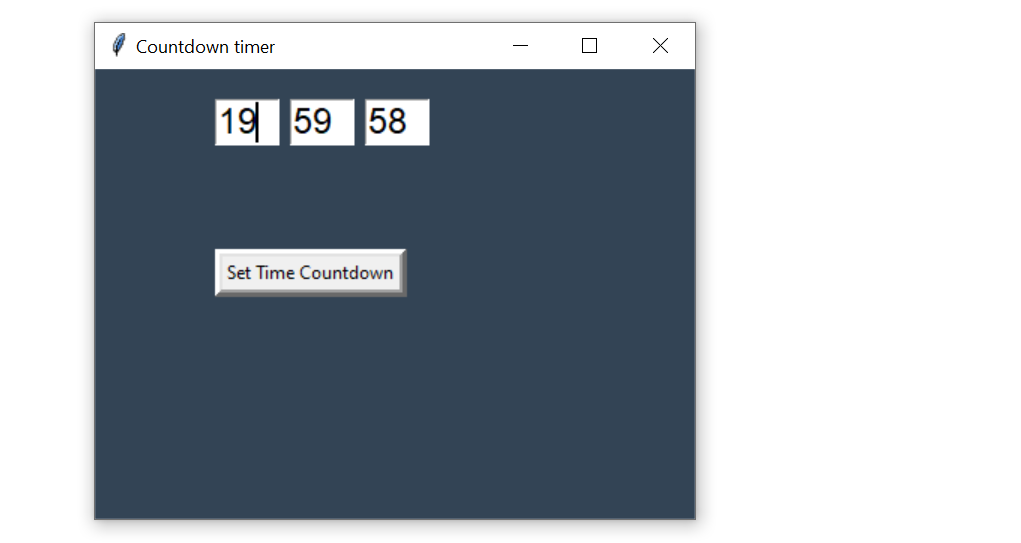

Parser.add_argument('seconds', type=int, help='amount of seconds to wait for') Parser = argparse.ArgumentParser(description='Simple countdown timer', conflict_handler='resolve') Time.sleep((target - now()).total_seconds()) Print(datetime.timedelta(seconds=remaining), 'remaining', end='\r') One_second_later = datetime.timedelta(seconds=1) Let me introduce you to argparse: import timeĭef countdown_timer(x, now=): Let specialized modules do the work for you. Unit_input = input("Enter the format in which you want to time yourself:'.format(delay))Ĭountdown_timer(int(delay.total_seconds()))īut the whole point of these two extra functions is to only gather parameters for the script from the user.
#PYTHON WITH AS TIMER CODE#
Here we discuss how do the Python Countdown Timer Works along with the respective examples.I am a beginner in Python and I am yet to move on from the basics to things like OOP.I wrote all of this code (Python 3) in an hour or so for a simple countdown timer.Although some parts of it are seemingly excessive,is the core of the code pythonic enough or are there better ways of structuring it?I would also like to know a better way for writing comments and variables effectively.More specifically I think the IOTimer() function could be cleaner. This is a guide to Python Countdown Timer. This function, in combination with a loop, serves as the Python countdown timer.

The “duration” for which we want to delay the execution is passed as an argument to the sleep() function in seconds. Python’s time library contains a predefined sleep() function. Python Countdown Timer can be utilized to wait for a certain duration of time in the idle state before reiterating the same piece of code in the loop again as required. Print('This window will remain open for 3 more seconds.') We are printing the text after a delay of 1 second by using the sleep() function, & that’s how it behaves like a stopwatch.This provides a perspective or an illusion that only the last second digit is changing dynamically in this program. By incorporating end=’\r’ as an argument in the print() function enables the cursor to go back and to the initial position on the screen an start from there itself.Thereafter we are formatting the minutes and seconds using the format() function.divmod()function is utilized to calculate the #minutes and #seconds.Let’s talk more about the functions utilized in this example: That’s why after a delay of 1 second, the stopwatch is updated by utilizing the functions available in Python’s time library.Here we are printing the text after a delay of 1 second by using the sleep() function. A while loop is used to repeat the same operation the required number of times.The program starts off with an importing time library, creating the stopwatch function wherein the actual logic resides.
#PYTHON WITH AS TIMER UPDATE#
Here we are going to update the counter in a dynamic manner. Yes, Instead of each iteration getting printed in the subsequent line. Here we will build a stopwatch similar to the one we have on mobile phones. That’s why each line is printed after a delay of 1 second, and that’s how we can create “Python Countdown Timer” by utilizing the functions available in Python’s time library.



 0 kommentar(er)
0 kommentar(er)
